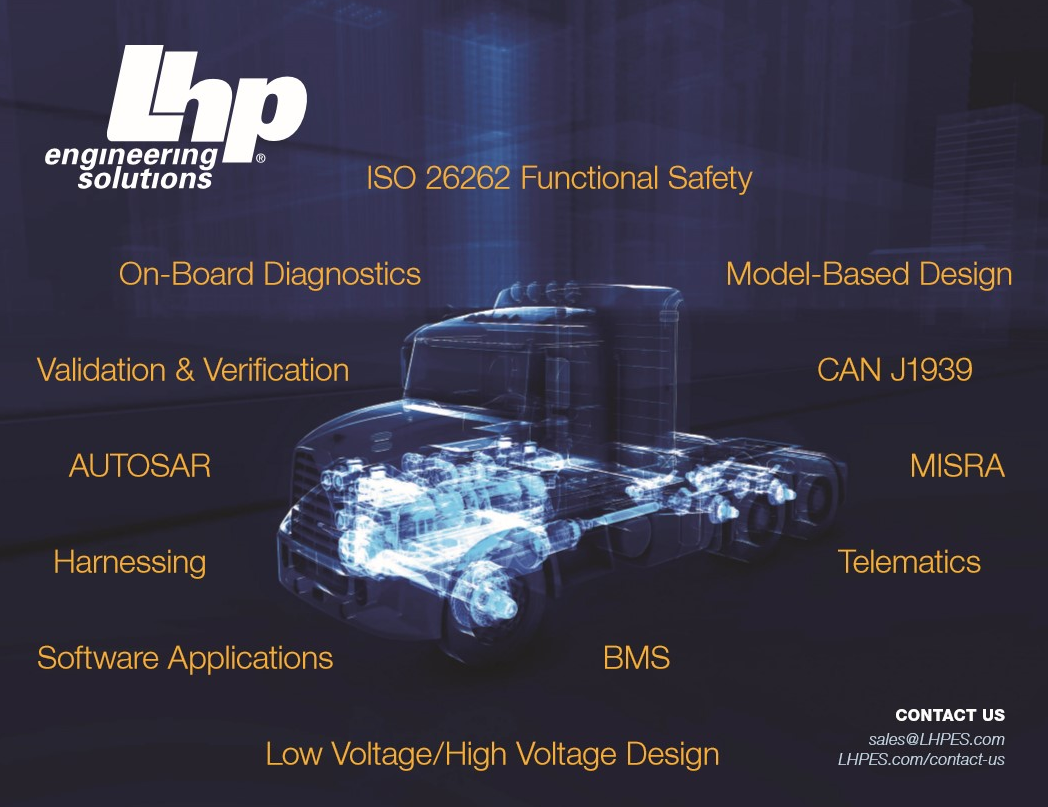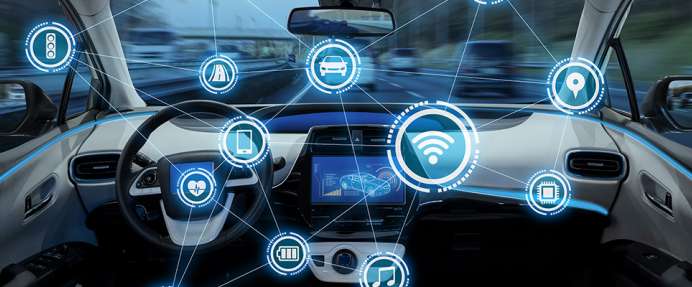How HiveMQ and MQTT Support USCAR
"Originally published on HiveMQ's blog, this post explores how HiveMQ MQTT supports USCAR standards."
Unlock Engineering Insights: Explore Our Technical Articles Now!
Discover a Wealth of Knowledge – Browse Our eBooks, Whitepapers, and More!
Stay Informed and Inspired – View Our Webinars and Videos Today!
6 min read
 James Roberts
:
Jul 22, 2022 2:07:36 PM
James Roberts
:
Jul 22, 2022 2:07:36 PM

As the world becomes more digitally advanced each year, the importance of collecting and understanding data is becoming more imperative. Using the Industrial Internet of Things (IIoT) in the automotive industry to communicate data should be considered a key advantage that helps the industry move towards producing safer, more sophisticated vehicles on the roads. With the amount of data produced, utilized, and analyzed within automotive, this industry is continuously evolving into a world that relies on data. The value of connected systems, such as IIoT, along with a well-constructed data analytics solution, can allow companies to assess, improve, and predict products from a concept level through completion.
In our everyday use, there are systems and components integrated within vehicles that help improve on-road safety and mobility—to name a few: automatic emergency brake (AEB), lane-keeping assist system (LKAS), blind-spot monitoring (BSM), and telematics. For these features to maintain efficiency, engineers and product developers immerse themselves inside the world of data, both at a macro and micro level. By implementing and using these connected devices, developers can continuously analyze that data and ensure that on-road vehicle safety and performance uphold efficiency. Again, technology is advancing at a brisk pace, meaning that the data associated with it is critical in maintaining that growth. To further assess the value that data analytics and IIoT can provide for an organization, it’s necessary to define both concepts in greater depth and detail.
IIoT—the “Industrial” Internet of Things—is the wing of IoT which closely relates to automotive, along with healthcare, agriculture, and logistics. IIoT often refers to connected devices utilized at an external level, like manufacturing. Data analytics often works alongside IIoT because manufacturers use these connected devices in their production process by sharing datasets through internet connectivity. Implementing IIoT systems is essential in automotive because of the industry’s gradual leap towards data-driven products and technology. For example, both autonomous vehicles and electric vehicles (EVs) are becoming more relevant in our world, and product development centralized around data is key in ensuring that these more advanced vehicles operate safely on the road. When it comes to vehicle assembly, data analytics and IIoT devices are heavily utilized during the development of a product’s life cycle.
Within automotive, the growth of data utilization is thriving parallel to the evolution of vehicular innovation. The data-driven era of this past decade has encouraged OEMs and other automotive companies to make data analytics a top priority within their processes. But how can data analytics be defined under the scope of automotive? Put generically, data analytics describes a continuous process of accessing, understanding, and analyzing raw data to expose visible trends.
In automotive, data analytics can be considered a support tool that allows companies to improve several aspects of their organization. From a business perspective, data analytics adds value to areas like internal processes, sales and marketing, and risk management. From a manufacturing perspective, analytics gives engineers and product developers opportunities to improve vehicle assembly by providing visibility of potential production issues. For optimizing automotive products, analytics is essential—it all goes back to data.
Data analytics and IIoT can also help companies reduce costs substantially. For example, one additional expense comes from unplanned maintenance during production. There are situations where equipment needs a sudden fix or components need to be replaced, which stalls production. Then, a maintenance worker comes in and works on the machinery. Additional parts may need to be ordered, and the maintenance worker may not realize a part is still operable until after components are removed and replaced, which unnecessarily wastes money and production time. Some companies will schedule downtime for maintenance in advance, but the costs are often the same.
Let’s reimagine this situation with IIoT devices connected to the production equipment: having these devices communicate and analyze the right data can inform workers which components are becoming worn and torn, and when they need a replacement ahead of time. This way, the maintenance process is predictive, and money isn’t being spent on unneeded actions. Additionally, if there are any technical issues or network disruptions, the right people would be notified immediately, allowing them to investigate the source of the issue. Using these connected devices can tighten up processes like equipment maintenance and gives companies visibility that can limit their overall spending.
Data analytics and IIoT play a significant role in automotive products’ life cycle development, both early on and the moment a vehicle reaches the market. By having several different IIoT devices communicate interconnectedly, engineers and product developers can access datasets at a micro-level. Data analytics and IIoT devices offer several advantages for product assembly, some of which include:
Product managers and developers help orchestrate products through a life of their own, starting as mere concepts and ending up as fully functional automotive machines. In other words, OEMs develop their vehicles through several datasets for a customer to purchase from a dealership’s showroom. Not all products are entirely the same, whether looking under the scope of manufacturing, automotive, healthcare, or another industry. Regardless, there are four main stages in which a product cycles through development and sales: introduction, growth, maturity, and decline.
The introduction stage is primarily that—introducing a new vehicle to the market, whether by calculated campaigning or social media promotion. Since this is a market-heavy stage, it can be rather expensive, though worth it, if the vehicle experiences steady revenue in the end. The growth stage involves a company competing in the market and understanding trends and customer demands to ensure their vehicle’s longevity against other competitors. In the maturity stage, the company begins selling the vehicle in the market. The decline stage is imminent, as products often decline due to advancements in technology, or simply shifts in consumer demands. This stage is often determined by revenue generation; if a product is experiencing a severe decrease in revenue, it is most likely near or in its decline stage.
Within these larger phases of the product life cycle—which highlight key moments from a business perspective—there are parts in the process that relate to the automotive and engineering side of things; these parts entail the use of data analytics and IIoT devices. Once a company has the raw materials needed for vehicle assembly, the following steps in the product life cycle development include:
When OEMs first receive raw materials for a product’s components, data analytics can help identify and prevent any faulty materials from being fed through the pipeline. IIoT devices are important during on-road testing as well. The product developers and engineers involved in the product assembly use these connected devices to analyze and communicate back to the original datasets, comparing and contrasting them. The goal is to ensure they are still working within the standards and requirements established beforehand.
Even after the vehicle goes to market, data analytics is intertwined at a consumer level. For example, the data gained from sensors implemented in a vehicle’s components help improve how people operate them on the road. The growing innovation of vehicle technology highlights the advantages of being able to connect solutions, devices, and humans to a final product line. That continuous feedback loop is a valuable component in how OEMs can improve the efficiency of the automotive products they distribute.
Proper data analytics and IIoT can also help avoid product recalls. The disruption of a product recall can occur for a few different reasons, but safety violations are frequently the perpetrator. IIoT devices collect and analyze data during vehicle testing, which often influences how product developers improve vehicle safety, in turn decreasing the chance of violations that could lead to recalls. Providing traceability—making sure datasets can be traced back to a source—can give companies enough visibility to avoid product recalls.
If a company is unable to avoid the issue and a product recall is ordered, data analytics can still help them work through this process to minimize the mess. Companies can collect and realign data from multiple data sources, using the information to trace the cause of the product recall. By finding the root cause quickly, it can be much easier for them to identify which consumers were affected and respond accordingly. Whether small or big, product recalls can be costly and harm an OEM’s reputation. There is much value in automotive data analytics and IIoT, and product recall situations are just one example of how these support tools can be used in proactive and reactive ways.
Companies that utilize data analytics and IIoT can add value to their overall internal risk management. Mitigating risks often limits the occurrence of setbacks and failures, allowing consistent organizational growth. As we continue to see large quantities of datasets emerge in this data-heavy industry, there may be organizational concerns. OEMs may face issues attempting to properly manage these large amounts of data. Additionally, there are potential environmental shortcomings that companies located worldwide may face—power grid access and connectivity speed—which minimizes the pros of using IIoT systems. The overall benefits of implementing data analytics and IIoT outweigh the limitations because the future of automotive success is embedded in data centralization.
Summary
Manufacturing companies have consistently contributed to vehicle development and assembly throughout the years. The future of software and its importance in both manufacturing and production is where real value can be added. Digital transformation is the innovation that some companies are adhering to. Understanding data through analytics and IIoT can influence the continual growth and success of the automotive industry.
There are a few hot topics circulating in the data-driven era of automotive we’re in—autonomous vehicles and EVs, which are often directly dependent on data. We are still years away from seeing these advanced automotive machines as the majority of vehicles used daily, yet these are some of the avenues being explored. Data analytics and IIoT are one pair of many technologies that help revolutionize the automotive industry. Their value is necessary for continuously refining and innovating automotive products. The vehicles navigating across our roads every day are becoming more advanced, and to accomplish the goal of creating safer roads, data analytics and IIoT should remain companies’ top priorities.

"Originally published on HiveMQ's blog, this post explores how HiveMQ MQTT supports USCAR standards."

Continuing from LHP’s recent post on truck platooning - “Is Platooning the Future of IoT in The Trucking Industry?”, there are other implications...

1 min read
What Is IoT? It is impossible to go very long without hearing that IoT, Machine Learning, Cloud Computing, and AI are going to completely transform...